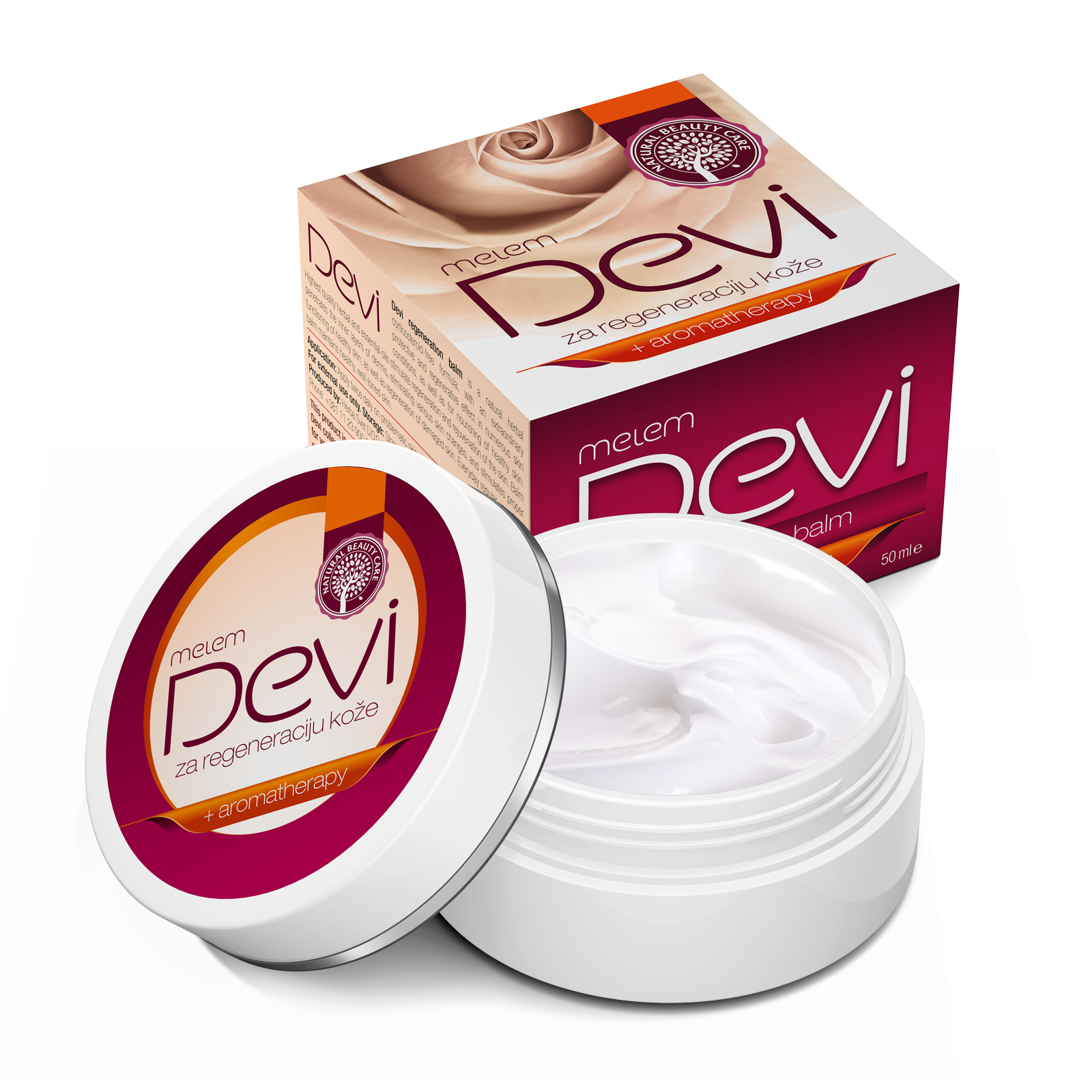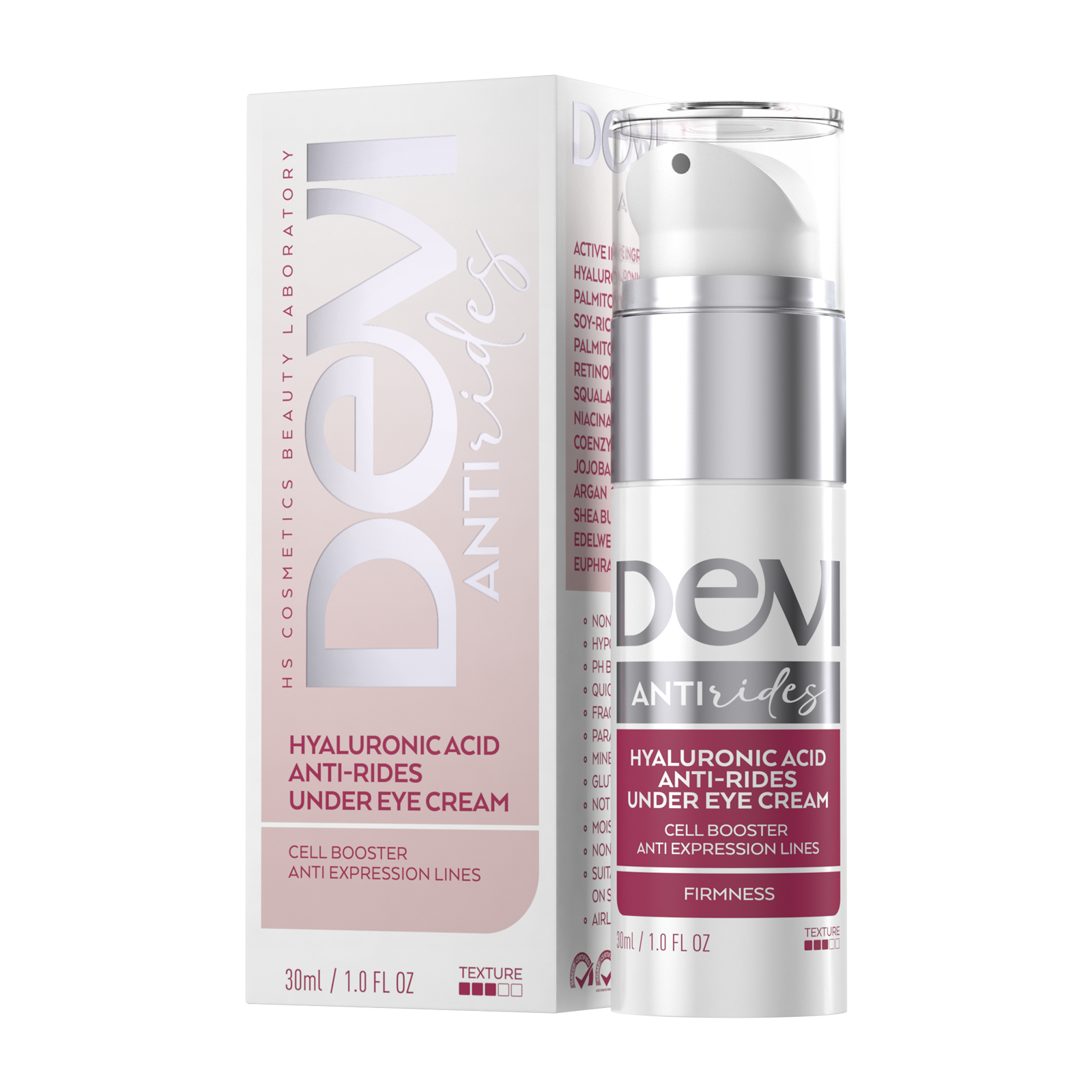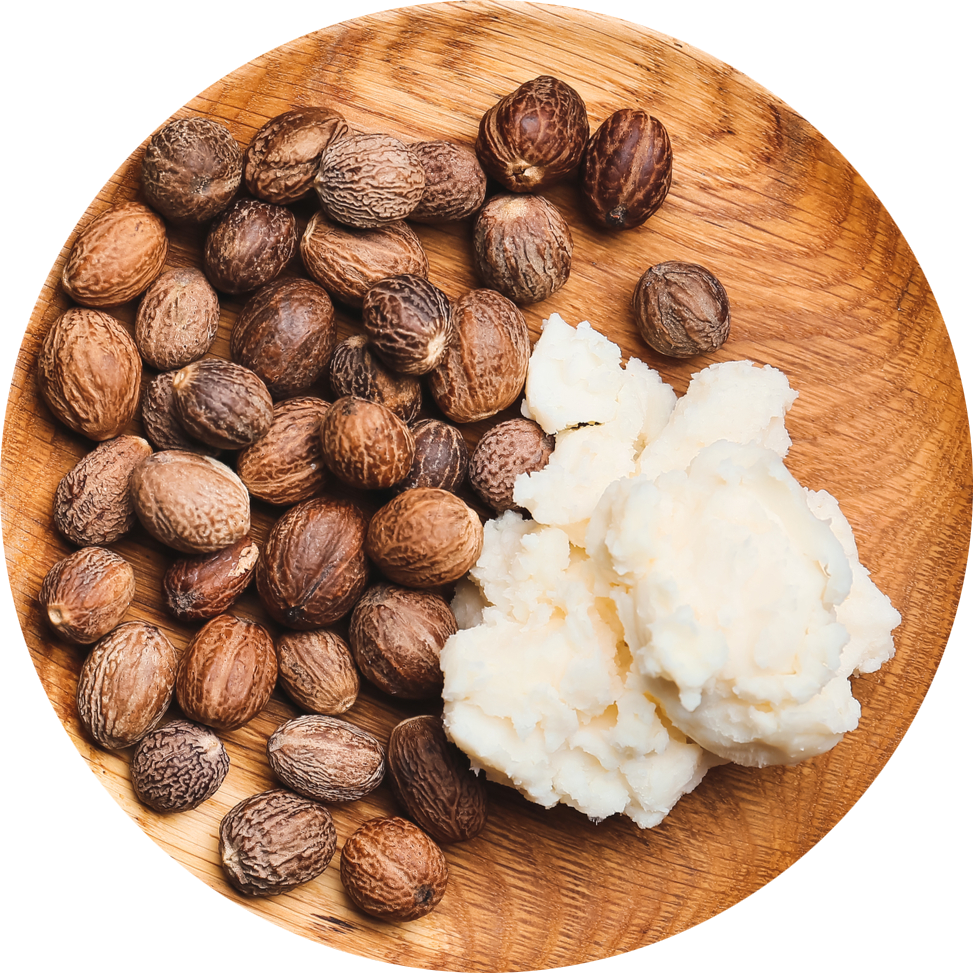(Butyrospermum parkii)
Shea butter (known in Latin as Butyrospermum parkii) is obtained by processing the fruit of the shea tree (Vitellaria paradoxa) which grows in sub-Saharan Africa, from Mali to Sudan and Uganda. Its name in English – shea butter – comes from the word in the Bambara language of Mali – shísu, while the French adopted the Senegalese word for this tree, ghariti, karité. In its raw form, this butter is ivory in colour, but it is often dyed with the yellow bark of the borutut tree, which is medicinal.
Today, 21 African countries in which shea tree grows produce shea butter, which is of great economic and social importance for them. Some archeological findings have confirmed that it used to be made in the 14th century, but probably much earlier. It is interesting that the oldest shea trees, those that are over one hundred years old, bear most fruit. In the belt below the Sahara desert, the weather can be temperamental, from the scorching sun, to strong winds and high humidity. All this has a negative effect on the skin, so it is not surprising that the tribes that lived there sought salvation in nature. For generations, African women have been picking and kneading the fruit of shea tree and protecting and healing themselves and their loved ones with its butter.
TRADITIONAL USE OF SHEA BUTTER
Vitellaria paradoxa can be used in its entirety; the leaves that contain saponin are used to make soap, the trunk is used to make glue, the shell of the fruit is used to make a water purifier or it can be used as construction material. In the north of Ghana, its leaves are used to relieve stomach ache, while a mixture of herbs is used to make a bath soak against fever and headache. Leaf infusion can help with eye infections. The leaves are also used as a preservative in various spice mixtures. Shea tree fruit which is up to 5cm in size is peeled and its contents are eaten raw or used for cooking. The fruit contains four times more vitamin C than oranges and even its flower is edible. In Nigeria, the root of this tree is chewed to clean teeth, while in combination with the bark it serves as a folk remedy for jaundice, diarrhoea and stomach cramps. Boiled bark powder is a medicine used to treat open wounds in horses; bark tea combined with other plants is a medicine used against parasites in cattle. In Ghana, bark tea is drunk as a cure for diabetes, while in Ivory Coast it helps in childbirth… It is difficult to imagine Africa without shea tree and its butter.
SCIENTIFIC PROOF
Today, we know that many Africans have protected and healed their skin thanks to the exceptional composition of shea butter. It contains unsaturated fatty acids: palmitic, stearic, oleic, linoleic and arachidic, 17 amino acids and is rich in vitamins and minerals.
Shea butter nourishes the skin, creates a healing barrier on the skin and protects against inflammation through the synergistic effect of its elements; in addition to anti-inflammatory action, it also has antioxidant properties, it protects the skin from free radicals – thus preventing the development of cancer cells – and also promotes wound healing. This butter moisturises the skin, stimulates collagen synthesis and protects the skin from ageing. Its anti-inflammatory effect is especially useful in inflammatory skin disorders such as psoriasis and eczema, which has been proven in studies: shea butter needs to be applied daily to affected parts of the body for only a week to calm eczema and smooth the skin. Another study states that tritertene cinnamates and acetates are the substances that alleviate inflammation and swelling on the skin, which is very helpful for inflammatory dermatoses such as psoriasis and atopic dermatitis in addition to eczema. The same study enumerates all the uses of shea butter: for hair recovery, relieving arthritis pain, swelling, for healing and disinfecting wounds; special emphasis is placed on its power to rejuvenate the skin. Shea butter regenerates the skin, tightens, moisturises and cleanses it, alleviates and prevents wrinkles, removes scars and eliminates the signs of photoaging, and therefore it is a common ingredient in anti-aging products. It is suitable for both dry and problematic skin because it effectively balances the secretion of sebum in oily skin prone to acne. A study has proved that shea butter has the power to regenerate the skin in up to 70 per cent of cases of dermatitis on the hands, sunburn and scars.
SUN PROTECTION
Today we know that this butter offers excellent sun protection to the people who live in Sub-Saharan Africa: it acts as a protective factor while the skin is exposed to UV rays, and then regenerates it and acts as an emollient. It is estimated that the sun protection that it provides is equal to the protection factors 6 to 10; in creams that contain other protection factors it increases photostability. Today, when more and more people are becoming intolerant to synthetic lotions, shea butter is re-emerging as a natural sunscreen. Thanks to its consistency it is ideal for application to the skin: it is solid at room temperature and melts when it comes in contact with the skin. Although it leaves a thin protective layer on the surface, it is quickly absorbed and penetrates deep into the skin, binding water and thus preventing desiccation. After exposure to the sun, shea butter calms redness, prevents irritations, inflammation and skin peeling and nourishes dry skin; in the same way it protects hair from damage and at the same time it helps with seborrhoea.
Today, the value of shea butter is recognised and appreciated and it has therefore become part of numerous preparations for facial, body and hair care and treatment for skin disorders. It can be applied directly to the skin or combined with other natural ingredients, depending on the purpose. Its caring properties are obvious in Anti-Rides Eye Cream. When shea butter is combined with cocoa butter, beeswax, extracts of witch hazel, yarrow and broadleaf plantain, and oils of Chilean rose, marigold, grape seed, avocado, jojoba, evening primrose and wheat germ, and essential oils of lavender, bergamot, rosemary and mandarin, an ideal balm is obtained, both for daily skin care and for the treatment of the skin affected by psoriasis and eczema, skin prone to inflammation and flaking, irritation after exposure to the sun, cold weather or wind. Devi skin regeneration balm includes the best properties of the top quality, cold pressed, unrefined shea butter and other nourishing ingredients that help alleviate wrinkles, scars, remove freckles and age spots; nowadays it is used for its nourishing and healing action all over the world, just like it used to be centuries ago in the middle of Africa.


